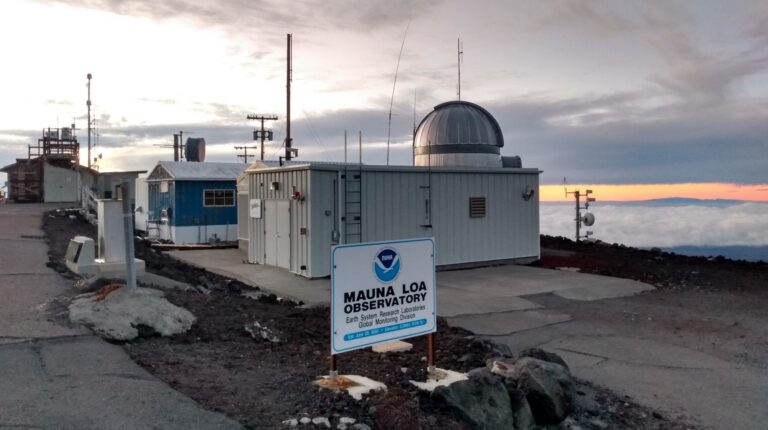The US Department of Energy (DOE) has awarded US$5m to NOAA to support the conversion of the Mauna Loa atmospheric baseline observatory in Hawaii to a net zero carbon facility.
The funding will help NOAA’s Global Monitoring Laboratory purchase solar panels and battery storage systems that will enable the observatory to operate on renewable energy.
The US$5m is part of US$250m in funding announced by DOE’s Assisting Federal Facilities with Energy Conservation Technologies (AFFECT) program to support energy and water efficiency projects and processes at US federal government-owned facilities.
The Mauna Loa Observatory is considered the benchmark site for monitoring the global increase in greenhouse gases that are driving climate change. The observatory has been without road access and electricity since November 2022, when lava from the erupting Mauna Loa volcano buried a little more than one mile of the access road and destroyed power poles.
“Over the past year, staff visiting the site once a week by helicopter have restored limited power to four key observatory buildings by augmenting existing solar generation and adding battery systems,” said Vanda Grubišić, director of the Global Monitoring Laboratory. “This project will allow us to operate fully on renewable energy to generate the electricity needed to make measurements critical for understanding our changing climate. It is fitting that Mauna Loa will be the first net zero facility operated by NOAA and I’m proud of my team’s achievement.”
Approximately 33% of the atmospheric measurements on the mountain site have now been restored, including consistent measurements for all the Global Monitoring Laboratory’s primary research groups: greenhouse gases, halocarbons and trace gases, ozone, global radiation and aerosols.
Relying on renewable energy to power the research site will help prevent future interruptions due to volcanic activity, said Christine Smith, acting Observatory and Global Network Operations Division lead. “This project will make the observatory more resilient to future volcanic activity and eliminate carbon emissions from the facility itself,” she added.
The Mauna Loa Observatory already uses roof collection systems to capture water needed to run the 3ha campus. The solar panels will make the observatory the first Department of Commerce facility to be net zero for both electricity and water.
Click here to read more net zero news



